The smartphone market is often a sea of similar glass rectangles, each vying for attention with slight iterative improvements. But every so often, a device emerges that breaks the mold, daring to be different with unique, sometimes bizarre, features. These are the strange smartphones that challenge our perception of what a mobile device can be. Our mission is to delve into seven such devices, determining which were genuine game changers that others should emulate, and which were destined to be evolutionary game overs.
I. The Minimalist Contender: E-Ink Meets Full Android

First up is a new minimal phone, aiming to be the "king" of devices designed for a less distracting experience. While it sports the familiar e-ink display and text-based user interface common to minimalist phones, this device uniquely runs full Android 14 with complete access to the Play Store. This presents a fascinating dichotomy: the peace of mind of a minimalist phone combined with the full capabilities of a normal smartphone, or simply a normal smartphone with a "laggy black and white screen".
Core Features & User Experience:
- It boasts a physical keyboard, a smart choice considering the typically slow refresh rate of e-ink screens, which can make typing a turn-off.
- A clever app search feature quickly opens an app once it's uniquely identified from the typed characters.
- While Instagram is usable for quick catch-ups without getting engrossed, gaming (like Pokémon) presents contrast issues on the e-ink display. Though display tuning is possible, a perfect balance between clarity at low refresh rates (which causes pulsing with motion) and readability at fast refresh rates is hard to achieve. The developers are reportedly working on updates to improve this.
- It includes front and 16MP rear autofocus cameras. Photos look different on the phone's display compared to a computer, but the quality is deemed "not great, but not bad".
- Additional perks include a side-mounted fingerprint scanner, fast wireless charging, a headphone jack, and expandable storage.
Verdict: Game Changer (for its niche) Despite not being for everyone, particularly those who need high-end cameras or full-color displays for professional use, this phone is considered a game changer. It offers minimalism in a way that allows users to define what that means for them, providing flexibility and ensuring pretty much everything can work.
II. Samsung Galaxy A80: The Rotating Revolution

What happens when a mainstream company like Samsung releases a niche product? You get the Galaxy A80 (2019), with one of the coolest hardware features: a motorized rotating camera system. This innovation means one set of cameras serves both rear and front-facing duties.
Initial Appeal:
- This design provided selfie quality potentially superior to even a hypothetical "iPhone 16 Pro Max from 2025" by using the main camera system.
- It enabled a completely notchless "New Infinity Display," a feature Samsung was very proud of.
- Motorized camera systems saw an explosion in popularity between 2019 and 2021, becoming an almost standard expected feature.
The Downsides: Why Motorized Cameras Faded
- Durability: Moving parts inherently mean less protection from the elements and more points of failure. A refurbished A80 demonstrated this, with its camera not flipping to a completely flat state.
- Speed: The mechanism adds a couple of seconds of waiting time every time the camera is used.
- Space: The rotation mechanism consumes valuable internal space that users might prefer be allocated to larger batteries.
- Scalability: As camera sensors get larger, flipping the entire module becomes increasingly difficult to implement effectively.
Verdict: Game Over While a "pretty cool case study," Samsung ultimately decided the idea needed to die due to its impracticalities.
III. LG G5: The Modular Dream
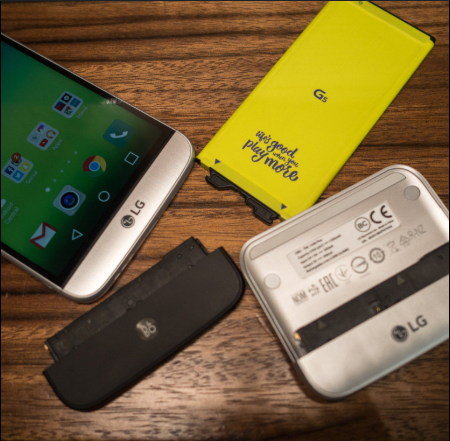
The LG G5 was one of the first serious attempts at a modular smartphone, akin to a piece of Lego. Its bottom third, containing the charging port, speakers, and battery, could be pulled off.
Core Feature: Swappable Modules
- The battery could be inserted into different base modules, such as:
- A Bang & Olufsen hi-fi module, adding a headphone jack and a 32-bit DAC.
- A camera grip module, providing a two-stage shutter button, a zoom dial, an ergonomic grip, and an extra 50% battery capacity.
The Allure of Modularity: The idea of customizing a smartphone to exact preferences and budget, and easily swapping out batteries instead of discarding the whole phone, was incredibly appealing. It mirrored the desirability of PCs where users pick specific parts. Even Google pursued this "holy grail" of a modular phone.
The Reality of Modular Phones: However, the concept never caught on.
- Design Constraints: Unlike spacious PC cases, smartphones require precise fitting. Creating a single phone body flexible enough to accommodate various module sizes (e.g., a tiny camera vs. a pro-level one) is a major challenge. Users with smaller modules would effectively pay for an over-engineered body designed to support higher-end components they aren't using.
- E-Waste: Modules risk becoming e-waste as soon as a new phone model with a different form factor is released, unless LG committed to the same dated shape, screen size, and connectors for all future phones. This could potentially create more waste than simply offering different fixed versions of the phone.
Verdict: Not a good idea for companies in 2025 The idea of a widely modular smartphone is largely considered unviable today, except in specific contexts like Fairphone's focus on repairability (swapping parts for easier repair, not upgrades) or CMF's approach of swapping accessories rather than core system components.
IV. ZTE Nubia Music Phone 2: Maximum Volume, Minimum Price?
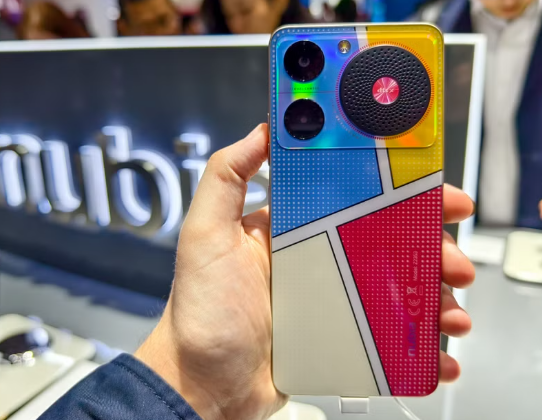
Bringing us to more recent times, the ZTE Nubia Music Phone 2 aims to stand out with its audio features and an aggressive price point of around $90.
Core Features:
- It boasts not one, but three speakers, including a prominent "ultra speaker" on the back designed to look like a record player.
- It features music-synced lighting effects (though described as "not very good") and a headphone jack.
- ZTE claims its speaker can hit volumes 600% louder than an average phone speaker and even allows the phone to function as a Bluetooth speaker for other devices.
- Despite the audio focus, it still packs a large 5,000 mAh battery.
The Sound Experience: The listening experience, however, was a "massive bummer". The 600% louder claim didn't hold up; the volume sounded similar to an iPhone but with significantly worse quality, lacking precision and control. The large speaker unit at the back didn't seem to add much, potentially because smartphones are so thin that even a large-area speaker lacks the depth to push enough air for impactful bass.
Verdict: Not speaking to the reviewer While the concept of a budget-friendly smartphone prioritizing speaker quality without sacrificing battery size is appealing, the execution fell short. It suggests that good sound requires more than just a large speaker unit, and that the large unit itself wasn't adding much benefit.
V. Essential Phone PH-2: The Unreleased Tall Tale
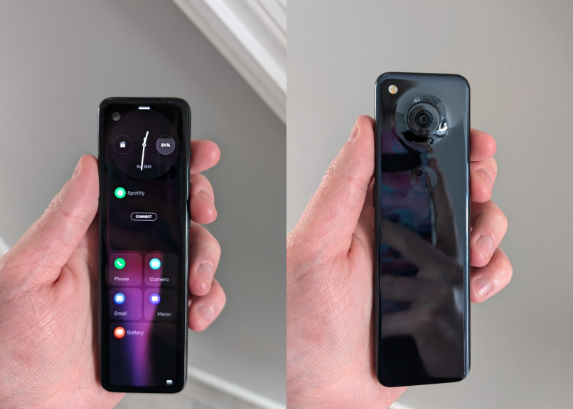
One of the most absurd and intriguing phones is the Essential Phone PH-2, announced in 2019 but never actually released. Tracking one down was a "wild goose chase". The original Essential Phone PH-1, headed by Android co-creator Andy Rubin, didn't sell well despite introducing the camera notch and having a click connector for modular accessories. This led to the cancellation of its successor, the PH-2.
Core Features & User Experience:
- The PH-2 has a "super weird tall thin shape" with a unique 2160x560 resolution, feeling like an ergonomic TV remote. This design aimed to reinvent interaction from two hands to one.
- It had a premium feel with nice haptic feedback.
- Gaming on its wide screen was "shockingly playable" for optimized games, feeling like a miniaturized triple-monitor PC setup. However, this experience wouldn't extend to all games.
- Typing was managed by a "completely diagonal keyboard," which, while strange, was intuitive and utilized the phone's vertical height better than standard layouts, keeping all letters within the thumb's natural arc.
- Navigation involved swiping up from different areas for 'back' and 'home'.
- The ultra-tall screen felt almost designed for efficient feed scrolling, offering ample room for thumb maneuverability without being too wide to reach all parts.
The Content Problem: A major issue is that most media would only fill a tiny portion of such a uniquely shaped screen.
Verdict: "Something in this" but not a game changer While surprisingly likable and offering an ergonomic benefit for scrolling, it wasn't deemed a game changer. For the vast majority, a slightly shorter and wider high-end compact phone would likely be better.
VI. Nokia 9 PureView: The Penta-Lens Pioneer
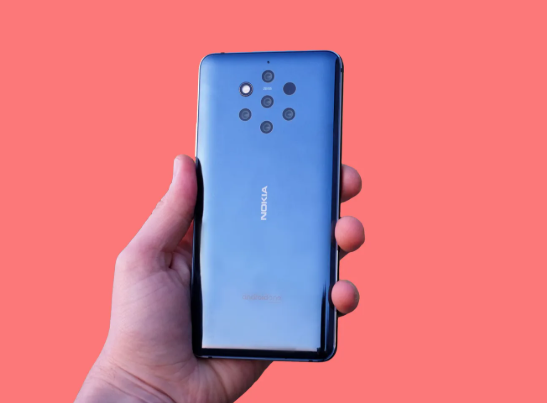
The Nokia 9 PureView, another 2019 device, is instantly recognizable by its "penta camera system" that resembles a "spider face". Unlike other multi-camera phones where each camera offers different magnifications, all five cameras here capture an almost identical photo simultaneously every time the shutter is pressed.
Core Feature: Computational Photography Powerhouse
- Three of the five cameras are monochrome sensors focusing on light and detail, while two capture color.
- All data from the five cameras is merged into one "superphoto," aiming for extreme levels of dynamic range (as each camera shoots at different exposures) and 1,200 layers of depth information for full refocusing after the shot.
The Photographic Promise & Pitfalls: The phone could take incredible photos with seemingly limitless editing ability. However, it wasn't a good phone overall.
- Lack of Lens Variety: Having five similar lenses meant no dedicated ultrawide or zoom camera.
- Performance Issues: Being the first of its kind, it was buggy.
- Slow Processing: Combining 60 megapixels of raw data for each photo took a full 10 seconds to process, and the phone got very hot doing so.
Verdict: Potential Game Changer – Ahead of its Time Despite its failures, the concept behind the Nokia 9 PureView should not be disregarded. A "2025 reimagined version" with faster chips (that wouldn't overheat) and more advanced AI for extracting detail and dynamic range could become the most pro-grade camera on a smartphone. This "failure of a phone" actually holds game-changing potential because its ambitions were beyond the capabilities of the technology at the time.
VII. LG Wing: The Swiveling Screen Maverick
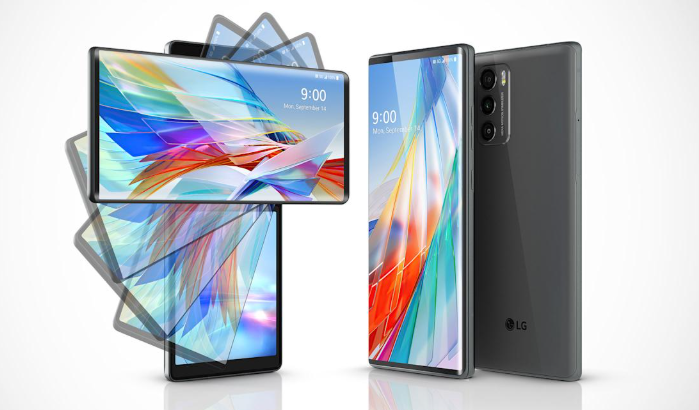
Perhaps the weirdest of them all is the LG Wing. In a world of safe, similar designs, LG opted for a phone that swivels open like a "helicopter".
Core Feature: Dual-Screen Swivel Mechanism The entire concept centers around the main screen swiveling horizontally to reveal a smaller, secondary display underneath, allowing two apps or functions to run simultaneously.
Use Cases & Advantages:
- Multitasking: Ideal for the "second screen experience," like watching a movie on the top screen while shopping on the bottom, or playing a game like Pokémon while managing items on the second screen.
- Assisted Experience: The second screen can act as an assistant, providing controls for the main screen content or, as seen in the game Asphalt, serving as a mini-map.
- Innovative Typing: By opening the keyboard on the bottom screen and then flipping the entire phone over, the main screen transforms into a full-size keyboard, making typing significantly more comfortable.
- Potential Advantage over Flip Phones: Unlike flip phones where typically only one screen can be used at a time, the LG Wing allows simultaneous use of both.
The Competition & Limitations: While innovative, the LG Wing faces hurdles:
- It's a little thicker and heavier than a normal phone.
- Its functionality has largely been absorbed by bigger foldable phones. Foldables, though opening with a hinge instead of a swivel, are more space-efficient and offer more screen real estate on their main inner display than both LG Wing screens combined.
- Hinge mechanisms on foldables are generally considered more reliable long-term than swivel mechanisms.
Verdict: Liked, but Not Needed The LG Wing is liked more than initially expected, but its unique functionality is now largely covered by large foldable devices, making it ultimately unnecessary.
Conclusion: The Legacy of Strange Designs
This journey through seven of the strangest smartphones reveals a fascinating tapestry of innovation, ambition, and sometimes, impracticality. From minimalist e-ink screens running full Android to rotating cameras, modular components, ultra-loud speakers, unreleased tall designs, multi-lens computational photography pioneers, and swiveling dual screens, each device tells a story. Some were ahead of their time, hinting at future possibilities, while others served as valuable, if expensive, lessons in what doesn't work. The smartphone industry's willingness to experiment, even if it leads to evolutionary dead ends, is crucial. These strange designs push boundaries, challenge norms, and ultimately contribute to the ongoing evolution of the devices we carry in our pockets every day. Whether a true game changer or an interesting footnote, each has played a part.
